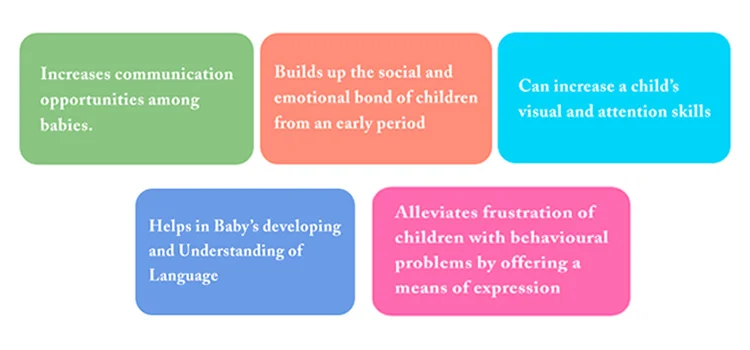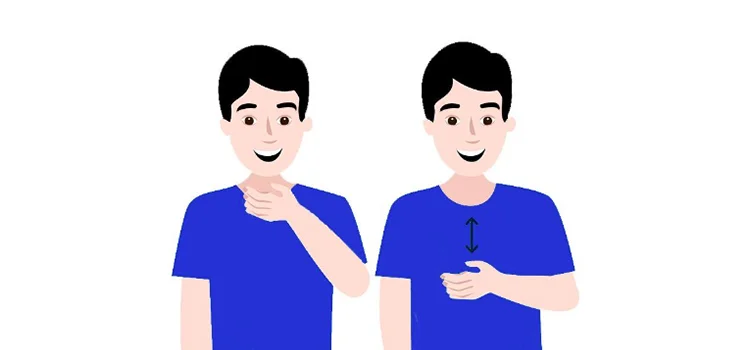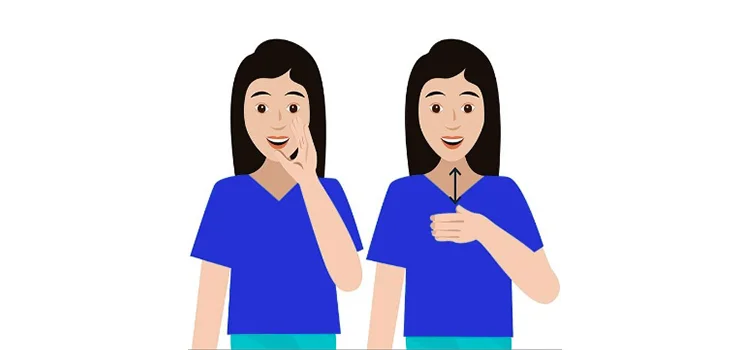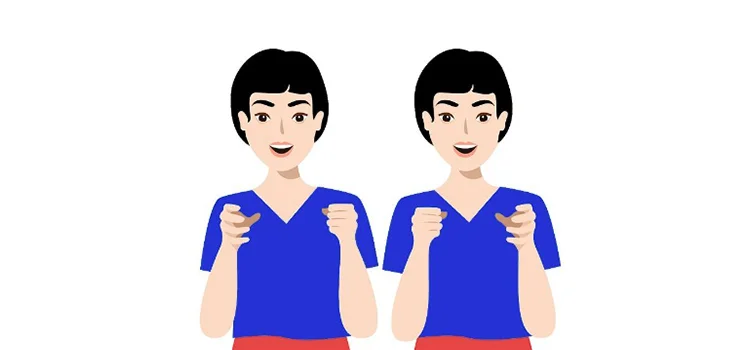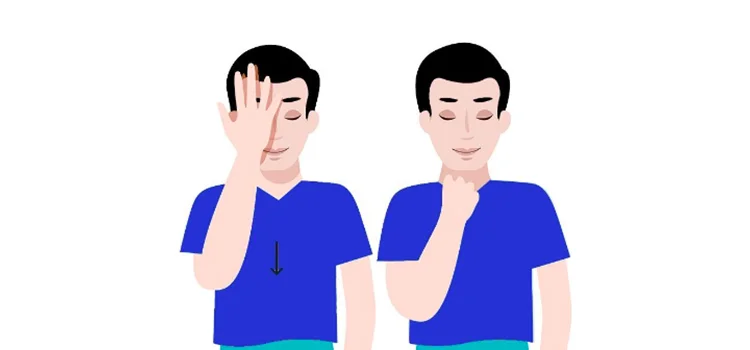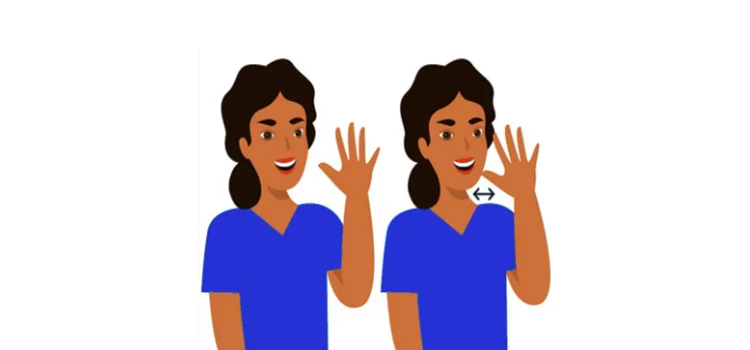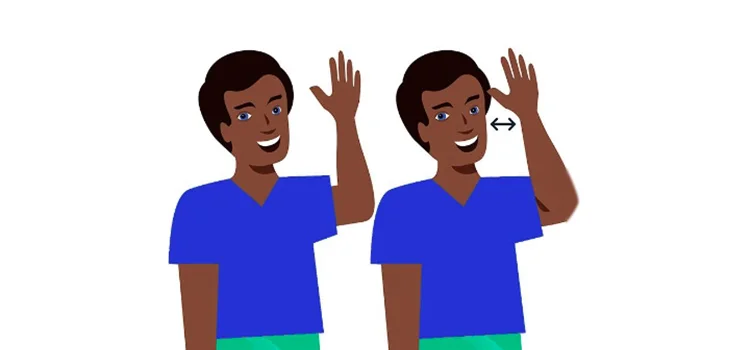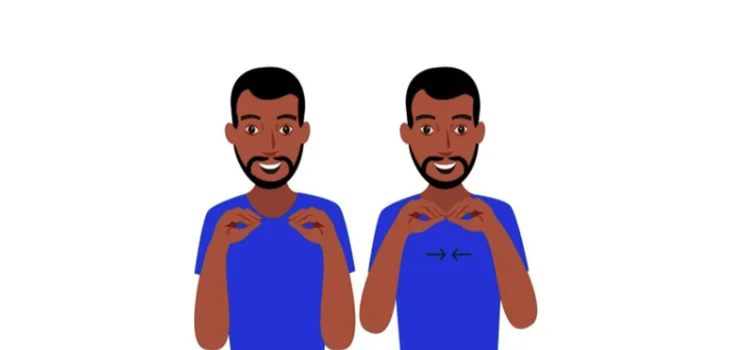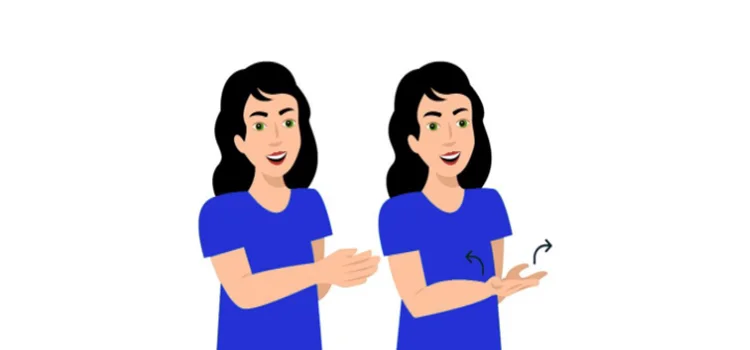BSL
Baby Sign Language UK | Simple Signs To Learn Today
Babies often wave their hands to mean “bye-bye” even before they can say it. To be picked up, they extend or raise their hands. All these are Baby Sign Language.
As a parent, you can feel more connected to your baby using the baby sign language. Explore every detail about the baby sign language and learn when, how and why to try it from this blog.
Table of Content
Baby Sign Language
The term “Baby Sign Language” is slightly delusive since it is not a genuine language with grammatical structure. According to thebump.com, Jann Fujimoto, a speech-language pathologist says, “Baby sign is not a technical sign language, such as ASL or BSL, which are primarily used by the deaf community and are more complex with grammar and sentence structure.”
Then what is Baby Sign Language? The Baby Sign Language is the act of communicating with babies using simple gestures. It uses signs for individual words. Using baby sign language can be an effective way to communicate with your child before language development.
Many people consider the Baby Sign Language a part of the British Sign Language (BSL) UK, whereas it’s not. Some parents might adopt the BSL signs for use. However, you should choose the signs as per your baby’s needs.
How does Baby Sign Language work?
We often use gestures as a part of our communication. Babies are more likely to use these gestures. They use different hand movements to convey their wants before learning to speak and this is how they communicate.
The baby might not always sign the word the way it should be. They might have their own way of expressing a word. The parents need to be very consistent to teach the signs as it takes a lot of signing before the baby gets it.
Practising sign language with your baby will not make him/her bilingual. You can make him learn hundreds of signs, but eventually, there would be speech developments and the real words would replace the signs.
 Are you looking for a Baby Sign Language course?
Are you looking for a Baby Sign Language course?
Why should you use Sign Language with your Baby?
Sign language benefits parents from communicating with their child when the child is yet to develop words. It also helps the child to express themselves. As a result, toddlers, instead of screaming out of frustration, can channel their demands.
Sign language can be considered a tool for communication, which can aid in a toddler’s speech development upon exploring.
Benefits of Baby Sign Language
Teaching your baby sign language allows engaging with your child. This can be an exciting way to spend quality time with your kid. While teaching sign language can have several benefits, some of them are:
When should you Introduce your Baby to Sign Language?
There is no specific age to start signing to babies; however, babies often begin to understand frequently used signs from the sixth month. Most babies will not be able to sign back until around 7-9 months of age. That does not mean parents cannot start signing early on.
As thebump.com suggests, “A good time to start is when the baby is between 4 and 6 months old,” according to Jann Fujimoto, a speech-language pathologist.
Babies start to use gestures before they learn to use words. So, you can initiate signing to your baby from birth. Make signing a habit so that your child grows up watching the signs and imitating them.
Does using Sign Language delay speech?
Many parents might be worried that using sign language will delay their babies’ speech development, but research indicates precisely the opposite.
According to www.today.com, A seminal study by doctors Linda Acredolo and Susan Goodwyn, funded by the National Institute of Health, showed that 11-month old babies exposed to sign language had larger vocabularies and understood more words by age two than those in the non-signing group of the study.
Initially, most toddlers tend to use signs only. Gradually, they overlap speech with the signs and then the signs disappear as speech develops.
Parents should use baby signs and normal speech to help the baby link gestures with the spoken language. If possible, try to give a face to face signing lesson so that the baby can pick from your words and body language.
Are there any other Drawbacks?
Teaching or using sign language to your child has no proven drawbacks till now. Some parents worry, thinking that their child might delay speech or might not develop language skills. There is no such evidence supporting the above statements.
However, communicating with your child in sign language can be frustrating at times. The entire process needs a lot of effort and patience. It is time-consuming as well since you need to observe your child’s response. All the family members might not be able to use the signs, hence can face difficulty communicating with the child.
How to Teach Sign Language to Your Baby?
- Get started with simple signs- Start with simpler and basic signs while introducing sign language to your kid. Your child might get confused if you sign everything you want to say. Initially, go for the easy ones like eat, hungry and sleep.
- Use signs along with speech- While using signs, say the words as well to create a link between the two. This would help your baby to develop his/her communication skill.
- Give Expressions- Try giving some facial expressions along with hand gestures. Baby sign language is not only about hand movements, but it should also evoke some emotions through expressions.
- Avoid being too fast- Babies need time to process information and so, while signing, try to go slow.
- Allow your baby to sign back- Parents should let their child sign back otherwise, they would fail to communicate. If a child is signing back, it means the baby has grasped the sign language.
Repeat- If you sign once in a while, your baby might find it difficult to understand. Sign whenever you get the opportunity. For example, show the sign for ‘milk’ every time you feed milk to your baby.

British Sign Language (BSL) Level 1 and 2
Best Signs to Teach a Baby
While signing babies, there is no particular sign to start with. As a parent, you can go for any baby sign to grow your infant’s communication skills.
Yet, some of the primary signs have been suggested here-
Hungry– A rubbed belly
Check video here- https://youtu.be/34rw5kxyL0Q
Drink– A cupped hand placed to the mouth
Check video here- https://youtu.be/6wRWKVM6u9U
Eat/Food- Tapping the tips of fingers to mouth
Check video here- https://youtu.be/_nkTVDYw-VY
Milk- Squeeze fingers in and out
Check video here- https://youtu.be/qsmvubJQYbQ
Sleep- One hand over your forehead with fingers spread apart, then drawing the hand down over the face until fingers and thumb come together to touch the chin.
Check video here- https://youtu.be/qShRTh7EGxA
Mom– Tap your thumb to your chin with an open palm and fingers facing up
Check video here- https://youtu.be/pJ3iqWUC3MI
Dad- Tap your thumb to your forehead with an open palm and fingers facing up
Check video here- https://youtu.be/vJEsWAX6F9c
More– Touch fingers to the thumb on each hand and then touch hands together at the fingertips repeatedly
Check video here- https://youtu.be/MbYLwyj72TY
Book– Clasp your palms together and then hinge open your hands
Top Courses of this Category
Tips You Might Be Interested In
Signing with your baby can be a fun activity. It allows you to explore the preferences of your baby along with strengthening the bond with you. Though there is no definite time or place for signing, try focusing on some regular events of a day to sign to your baby repeatedly.
The events can be bath time, bedtime or mealtime. You can introduce the basic signs during this time. While giving a bath to your baby, you can teach the signs for water, clean and dirty. You can sign about ‘sleep’ and a ‘book’ to read out as a bedtime story during bedtime.
Mealtime can be the most effective time for signing. You can start with the sign ‘hungry’ and then gradually teach the signs for ‘eat’ and ‘food.’ Babies are mostly fond of milk, which is why most parents are likely to start signing with ‘milk.’
Conclusion
The Baby Sign Language needs some effort, but if you know when, why and how to try it, your hard work would be definitely worth it. Hopefully, this blog was able to answer all your queries about baby sign language. Now, what are you waiting for? Try the signs with your baby today!


 Are you looking for a Baby Sign Language course?
Are you looking for a Baby Sign Language course? 